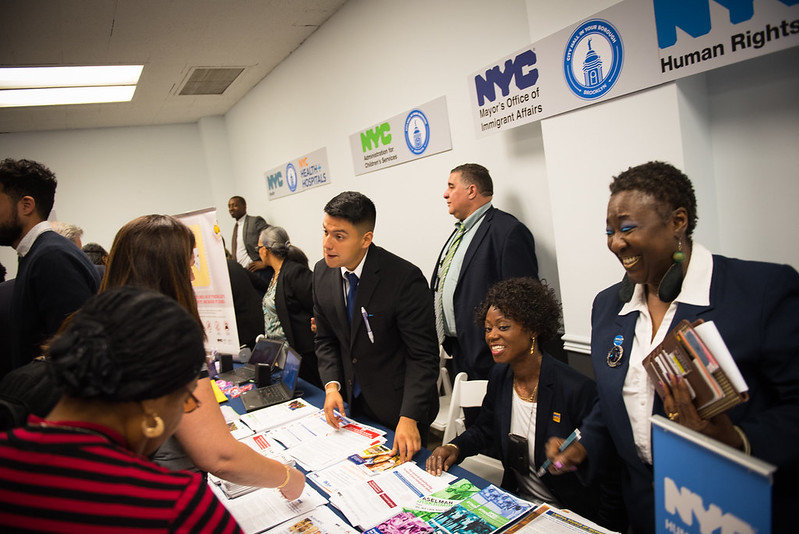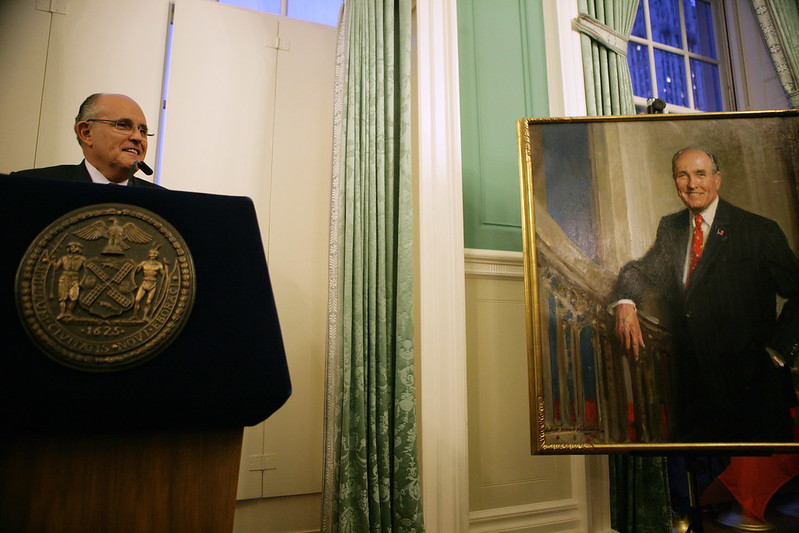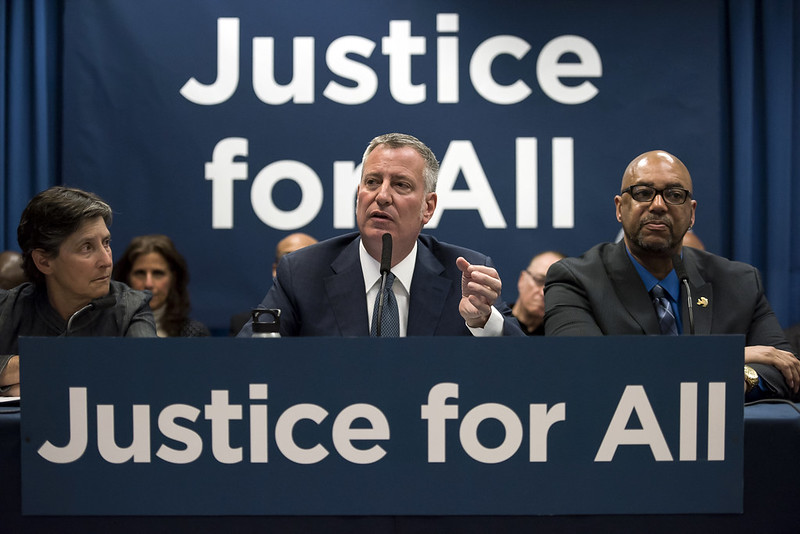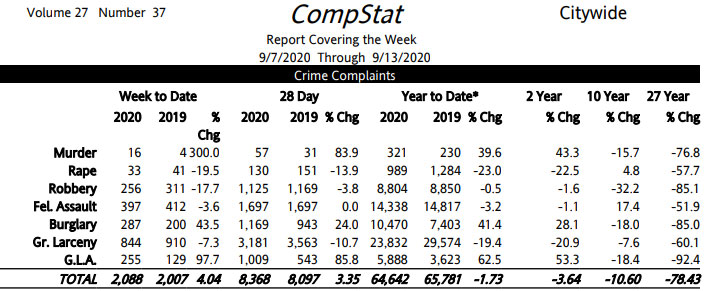A Critical But Too Often Ignored Piece to New York City’s Economic Recovery

A resource fair (photo: Edwin J. Torres/ mayoral Photography Office)
Getting people back to work safely after the record-breaking job losses seen during the pandemic is on everyone’s mind. While this will require a multi-faceted approach, the frontline workforce field, i.e. the professionals responsible for training and connecting marginalized jobseekers with employers looking for skilled workers, is generally overlooked in this conversation. Real economic recovery won’t happen without clear and strategic investment in the workforce development training sector.
The field is no stranger to supporting underserved communities behind the scenes during tough economic times. They supported low-income workers and jobseekers through the labor market downturns after 9/11 and during the Great Recession, stagnant minimum wages and welfare reforms, and stop-and-frisk policing that created lifetime criminal records used to deny employment.
Food service, hospitality, retail, and personal care industries were hit hardest by the pandemic, which disproportionately employed low-income workers and workers of color. Even if the economy bounces back and jobs quickly become available, low-income communities in New York City don’t have adequate access to the skills and background experience needed to acquire many of them.
Businesses in every sector are rethinking operations, requiring updated skills from employees. Preexisting education and digital literacy barriers put low-income communities at a significant disadvantage in securing stable and sufficient employment in a post-pandemic world. Given how quickly jobs are changing and industries are innovating, there now needs to be even more consideration around how to prepare people for available jobs long-term.
In order to meet this historic challenge, we need to fully understand the needs of the sector dedicated to getting folks back to work. Over the past few months, Workforce Professionals Training Institute (WPTI) conducted a series of surveys analyzing frontline workforce professionals and the industry at large, and released the first in a series of reports titled “An Introduction To New York City’s Frontline Workforce Professionals” outlining who they are, who they serve, and what they need to succeed.
The 362 professionals surveyed confirmed a lot of what we already knew. Frontline workforce development professionals are disproportionately women (67%) and people of color (72%) who are often underpaid and in precarious situations themselves. Despite having higher education levels than other NYC employees on average, they earn lower wages. Just over one-quarter of respondents agreed that their take-home earnings are only enough to cover basic living expenses.
Making matters worse, there’s no clear pipeline to the workforce development training field and rarely a clear career trajectory or job description once you’re in it. Many respondents anecdotally noted that they “fell into” or “stumbled upon” this field. Seventy percent (70%) of survey respondents agreed that they would like to advance within their current organization, but less than half feel that requirements for advancement are clear. Simultaneously, 72% indicated being responsible for four or more distinct job responsibilities and, even more troubling, nearly one-quarter selected an overwhelming 10 or more duties. It’s important to note that these responses were captured before the COVID-19 pandemic: this doesn’t capture the added pressure of bringing previously in-person programs entirely online and addressing digital literacy gaps and broadband access needs.
While the sector doesn’t need fanfare to do this work, the systemic barriers they face are now too large to ignore. With state and city budget shortfalls likely to cause short- and long-term delays in government contracts and other funding, we need the private sector and the federal government to supplement existing funding for the workforce development sector to adequately address this crisis. In order to encourage greater talent retention and create the best possible outcomes for jobseekers, we need to encourage retention and invest in the field with the experience and expertise needed to get New Yorkers back on their feet and into careers with growth potential.
COVID-19 has permanently changed many aspects of life, and the workforce development sector is no exception. For employers to more easily access qualified talent as the job market expands again, they – and we as a city – need frontline workforce professionals.
***
Sharon Sewell-Fairman is the Executive Director of the Workforce Professionals Training Institute. On Twitter @WPTIorg.
***
Have an op-ed idea or submission for Gotham Gazette? Email This email address is being protected from spambots. You need JavaScript enabled to view it.
Giuliani’s Rant on Crime in New York City: The Numbers Tell a Different Story

Rudy Giuliani at City Hall (photo: Kristen Artz/Mayor's office)
Former Mayor Rudy Giuliani launched an attack on Mayor de Blasio, blaming him for rising crime and crowing about how safe New York City had been until de Blasio took over. Giuliani reportedly said, “We went from being the most dangerous city to the safest large city in America, and we remained there until this idiot took over.“ It is certainly terrible that murders so far this year have increased compared to last year, nobody likes to see that. But if one chose to actually go back to Giuliani’s final year as mayor, 2001, the city was in fact less safe, with far higher crime levels across the board, including murder, than today.
NYPD Crime Statistics clearly bear this out. Before taking a look at the overall stats, one can acknowledge murders are up this year in the city compared to last year.
According to NYPD data for the year to date, there have been 321 murders in New York City from the beginning of the year through the week of September 13, compared to 230 through the same period last year, a 39.6% increase.
Nonetheless, murders were substantially higher in Giuliani’s final year in office than they are now. Below is the NYPD Historical Perspective data set, also published by the NYPD as part of the CompStat Crime Statistics along with the current crime stats. There were 649 murders in 2001, the former mayor’s final year, compared to 319 in 2019.
With 321 murders in the 36 weeks through September 13, 2020, the pace of murders in the city this year is about nine per week. Even if that pace continues, there would still be fewer murders in 2020 than in 2001, or 1998. With 15 weeks and a few days left in 2020, that pace would bring the City to 470 murders, about 28% below 2001 and 24% below the low point of Giuliani’s mayoralty in ‘98. That means to return to the lowest yearly number of homicides of the Giuliani Administration would be, to some like Giuliani, a return to ‘The Bad Old Days.’
In addition to the number of murders being far higher in 2001 than 2019, and higher in ‘01 than 2020 even if the current pace is sustained, levels of crime as measured by the FBI Index of major felonies across New York City were higher in all categories in Giuliani’s final year in 2001 than in 2019.
The NYPD CompStat table shows crime in New York City in the seven major felony categories was down 41% in 2019 compared to 2001, and 55% lower than 1998.
Crime in the city in 2020 is actually down or flat in some categories compared to last year, and has spiked in some other categories. Below is the NYPD comparison for the seven Index crimes for this year, compared to last year.
There are various ups and downs in the crime numbers this year compared to last. The number of reported rapes through September 13 declined from 1,284 to 989, down 23% over the same period from a year ago. Robbery and felony assault levels are flat, down one-half of one percent for robberies and down 3% for felony assault. Burglaries are up 41% and larcenies are down 19%. Grand larceny auto is up over 60%, rising from 3,600 by this time last year to nearly 5,900 this year.
Giuliani was praised for his success in cutting vehicle theft, but in 2001 there were still over 29,600 vehicle thefts, or 569 a week. Despite the considerable increase in vehicle theft this year, the current pace is 163 a week, still down 71% compared to Giuliani’s final year. The current pace of robberies remains 50% below the 2001 level, and the current pace of burglaries remains 54% below 2001.
One can go back to Giuliani’s first year to take a look at murders in the city, and all the way forward to the present, through the Bloomberg and now de Blasio administrations:
NYC MURDERS 1994-2019
| Giuliani | Bloomberg | De Blasio | |||
| 1994 | 1561 | 2002 | 587 | 2014 | 328 |
| 1995 | 1177 | 2003 | 597 | 2015 | 352 |
| 1996 | 983 | 2004 | 570 | 2016 | 335 |
| 1997 | 770 | 2005 | 539 | 2017 | 292 |
| 1998 | 663 | 2006 | 596 | 2018 | 289 |
| 1999 | 671 | 2007 | 494 | 2019 | 319 |
| 2000 | 673 | 2008 | 522 | 2020 thru 9/13 | 321 |
| 2001 | 649 | 2009 | 471 | ||
| 2010 | 534 | ||||
| 2011 | 515 | ||||
| 2012 | 414 | ||||
| 2013 | 332 |
(Source: Wikipedia (there appear to be some small discrepancies between the Wikipedia data and the NYPD Statistics as presently published))
There were 7,117 murders in Giuliani’s eight years as mayor of New York City and 6,171 murders in Bloomberg’s 12 years in office. For the first 6 and 2/3 years under de Blasio, there have been 2,236 murders. I think that means the city is more safe, not less, under Mayor de Blasio than under Mayor Giuliani.
The point here is not to deny Rudy Giuliani some credit for a safer New York in the 1990s, or to suggest that the current increase in crime isn’t a serious concern -- it is, and the mayor, the Police Department, and the city government need to address it in a way that brings people together, no matter how difficult that is. But as the data show, Guiliani’s comments about de Blasio’s New York City do not hold much water.
***
Jim Brennan was a member of the New York State Assembly for 32 years, where he chaired four committees. On Twitter @JimBrennanNY.
***
Have an op-ed idea or submission for Gotham Gazette? Email This email address is being protected from spambots. You need JavaScript enabled to view it.
De Blasio's Cuts to Jail Oversight Must Not Stand

Mayor de Blasio (photo: Ed Reed/Mayoral Photography Office)
New Yorkers are beyond tired of the tale of two mayors: one who claims to be committed to substantive reform of New York City’s criminal legal and jail systems and another who resists, delays, and undermines efforts to address the deep injustices of those same systems. The first mayor touts his support for closing Rikers Island jails, ending solitary confinement, and releasing people from jail at the onset of the coronavirus outbreak — though he came to these positions only under constant pressure by advocates, and we are often reminded that he has not truly understood our demands.
The other mayor tells a very different story with his actions, such as his support for expanding the use of bail (and willingness to amplify his NYPD’s efforts to spread fear about bail reform), his choice to prioritize the jobs of police and correction officers over human services, his unwillingness to address ongoing abuse by law enforcement, and most recently, his plans to cut jobs at the Board of Correction by 31% compared to last year.
For most New Yorkers, the Board of Correction may be a relatively unknown agency. The BOC is an oversight board that regulates, monitors, and inspects facilities run by the Department of Correction (DOC). The Board is supported by a small staff of 25 that is already too small to fully meet its mandate. The Board’s budget is only 0.23% of the Department of Correction’s budget, compared to the Civilian Complaint Review Board, a police oversight entity whose budget is now set at 1% of the NYPD’s personnel budget.
The BOC’s oversight role is at least as crucial as the CCRB’s, if not more. The NYPD’s brutality can sometimes be seen in public, recorded by cell phone cameras, and shared widely, but abuse of people in the city’s jails happens behind locked doors, and only the Department of Correction and Board of Correction have access to the video evidence.
Over the five years that DOC has been under a federal monitor for excessive use of force against people in their custody, use of force has only increased — to rates now 105% higher than in 2016. This month, New York City settled a $5.9 million lawsuit with the family of Layleen Polanco, and recently disciplined 17 correction officers involved in her death, after an extensive report by the Board. In the wake of COVID-19, the Board has also served an essential role in advocating to keep incarcerated people safe (including by releasing people), and compiling regular reports about management of COVID-19 in the jails. These reports have been critical in substantiating the sweeping claims by people in custody that safety protocols touted by the Department of Correction have not been happening in practice. The voices of people in custody are too often discredited by prosecutors, judges, and other stakeholders, leaving the Board’s monitoring and subsequent reporting essential to elevating the many safety concerns voiced from inside the jails.
There has probably never been a worse time to cut back on jail oversight. Despite the revenue shortfalls New York City is facing, this disaster can be avoided by looking to a much more appropriate place for budget cuts: the department that is perpetrating these abuses against New Yorkers. The Department of Correction has more than two uniformed officers for every person in custody — amounting to the highest jail staffing ratio in the United States, more than eight times higher than the national average. Despite that ratio, the Department’s budget still includes over $60 million for overtime. The Federal Nunez Monitor’s most recent report said that this overstaffing is actually driving more violence against people in the jails, especially through Probe Teams (essentially riot squads), which still have an operating budget over $37 million.
Mayor de Blasio faces a clear choice here, and the decision he makes will have life-and-death consequences for people in the custody of his Department of Correction. He can choose to cut the Board of Correction budget and worsen the human rights crisis on Rikers Island and in all city jails. Or he can preserve the Board’s budget and essential functions, a necessary step that must be followed by further action to finally end the Department of Correction’s reign of terror.
***
Darren Mack and Roger Clark are formerly incarcerated leaders and members of the Jails Action Coalition. On Twitter @iamdarrenmack & @JailsAction.
***
Have an op-ed idea or submission for Gotham Gazette? Email This email address is being protected from spambots. You need JavaScript enabled to view it.








